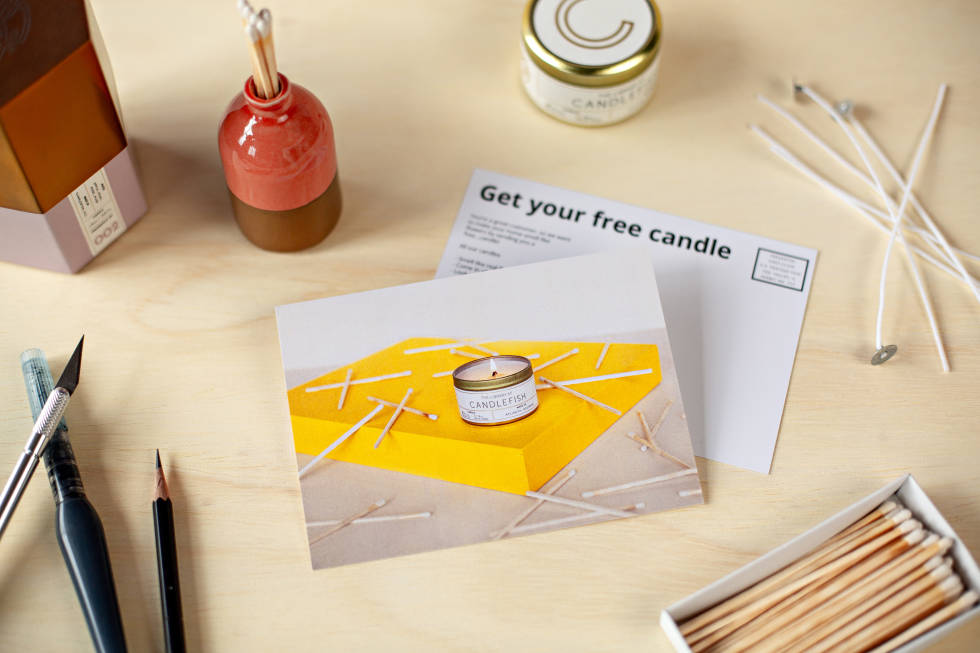In Mailchimp, we take care of the more complicated design tasks so you can focus on making your postcard look great:
- We show you where we'll trim your postcard (the bleed area), so you can make sure your photos and other important details don't get cut off.
- We automatically convert your image to CMYK color—the color model used in printing—to ensure it stays vibrant when it's mailed to your contacts.
But in order to get your design just right, you'll want to keep these requirements in mind:
| Design element | Measurement |
|---|---|
| Postcard dimensions | 4.25 x 6in |
| Image dimensions | 1875 x 1350px or greater |
| File type | JPEG or PNG |
| Computer monitor brightness (to avoid digital images appearing too dark when printed) | 70% or less |
Define your goal
Before you start creating your postcard, you'll want to answer these 3 questions:
- Who is your audience?
- Why are you sending it?
- How will you get people to read it?
Whether you're looking to send a postcard to sell more stuff, grow your audience, re-engage inactive contacts, or anything in between, Mailchimp has what you need to reach the right people with a beautiful postcard.
Now that you've identified your goal, let's get to work on your postcard design and copy.
Create your layout
While designing a postcard in Mailchimp takes just a few clicks, starting with a layout (like the one we’ve included below) can help you see where all your elements should go.






